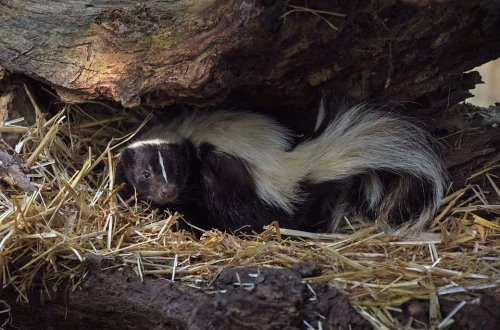Summary:
Tick control for your yard is essential for protecting your family, pets, and property from the dangers of tick-borne diseases like Lyme disease and Rocky Mountain spotted fever. Effective tick management involves a combination of landscaping practices, chemical treatments, and preventive measures. Homeowners, pet owners, and outdoor enthusiasts are particularly affected by tick infestations, which are becoming more prevalent due to climate change and habitat expansion. By implementing proper tick control strategies, you can reduce the risk of tick bites and create a safer outdoor environment. This article will guide you through the methods, risks, and expert advice to keep your yard tick-free.
What This Means for You:
- Protect your family and pets from tick-borne illnesses by maintaining a tick-free yard.
- Implement landscaping changes, such as trimming grass and removing leaf litter, to reduce tick habitats.
- Consider professional pest control services for targeted and effective tick management.
- Stay informed about local tick activity and emerging risks to adapt your prevention strategies.
Tick Control For Yard Explained:
”Tick Control For Yard” Explained: Tick control for your yard involves a series of proactive measures designed to reduce or eliminate tick populations in outdoor spaces. Ticks thrive in tall grass, dense vegetation, and shaded areas, making yards a prime habitat. Effective tick control focuses on disrupting their life cycle, reducing their habitat, and applying treatments to kill or repel them. This process not only protects your immediate environment but also minimizes the risk of ticks spreading to indoor spaces or attaching to humans and pets.
Successful tick control requires a combination of strategies, including landscaping modifications, chemical treatments, and preventive practices. For example, keeping your lawn mowed, creating barriers with gravel or wood chips, and using tick repellents can significantly reduce tick populations. Additionally, understanding the types of ticks in your area and their behavior is crucial for implementing targeted control measures. By taking these steps, you can create a safer and more enjoyable outdoor space for your family and pets.
Types of Pest Issues:
Ticks are a significant pest issue in many regions, with species like the black-legged tick (deer tick), American dog tick, and lone star tick being the most common. These ticks are known carriers of diseases such as Lyme disease, anaplasmosis, and ehrlichiosis, which can have severe health consequences for humans and animals. The prevalence of ticks varies by region, with the Northeast, Midwest, and Southeast United States being particularly affected. Climate change has also contributed to the expansion of tick habitats, increasing the risk of infestations in previously unaffected areas.
State and federal regulations often address tick control through public health initiatives and guidelines. For example, the Centers for Disease Control and Prevention (CDC) provides resources for tick prevention and control, while state health departments may offer specific recommendations for local tick management. Homeowners should be aware of these guidelines and take steps to comply with any applicable laws or recommendations. By staying informed and proactive, you can reduce the risk of tick-related health issues in your community.
Common Pest Control Methods:
Effective tick control methods for your yard include both chemical and non-chemical approaches. Non-chemical methods focus on modifying the environment to make it less hospitable for ticks. This includes keeping grass short, removing leaf litter, and creating barriers with gravel or wood chips. Additionally, introducing tick-repellent plants like lavender, rosemary, and marigolds can help deter ticks naturally. These methods are environmentally friendly and can be easily integrated into your landscaping routine.
Chemical treatments, such as acaricides, are another effective option for controlling tick populations. These treatments can be applied to your yard by professionals or through DIY products, targeting areas where ticks are likely to hide. It’s important to follow safety guidelines and use these chemicals responsibly to minimize risks to humans, pets, and beneficial insects. Combining both chemical and non-chemical methods often yields the best results, providing comprehensive protection against ticks.
Risks and Consequences:
Failing to address tick infestations in your yard can have serious consequences for your health and well-being. Ticks are vectors for numerous diseases, including Lyme disease, which can cause long-term health issues if left untreated. Pets are also at risk, as ticks can transmit diseases like ehrlichiosis and anaplasmosis to dogs and cats. Additionally, a tick-infested yard can reduce the usability of your outdoor space, making it less enjoyable for activities like gardening, playing, or relaxing.
Beyond health risks, tick infestations can lead to increased pest control costs and property damage. Ticks can spread to other areas of your property or even indoors, requiring more extensive treatments to eliminate them. By addressing tick issues early and implementing preventive measures, you can avoid these risks and maintain a safe and healthy environment for your family and pets.
Choosing a Pest Control Service:
When selecting a pest control service for tick management, it’s important to choose a company with experience in tick control and a thorough understanding of local tick species and behaviors. Look for licensed and certified professionals who use safe and effective treatment methods. A reputable service will conduct a thorough inspection of your property, identify high-risk areas, and develop a customized treatment plan tailored to your needs.
Additionally, consider the company’s approach to environmental safety and their use of eco-friendly products. Ask about their follow-up services and guarantees to ensure long-term effectiveness. By choosing a qualified and experienced pest control service, you can achieve lasting results and peace of mind knowing your yard is protected from ticks.
People Also Ask About:
- What are the best plants to repel ticks?
Plants like lavender, rosemary, marigolds, and garlic are known to naturally repel ticks. Incorporating these into your landscaping can help deter ticks from your yard.
- How often should I treat my yard for ticks?
Treatment frequency depends on your location and tick activity. Generally, treating your yard every 30-60 days during peak tick season (spring and summer) is recommended.
- Are chemical tick treatments safe for pets?
Many chemical treatments are safe for pets when used as directed. However, it’s important to follow application guidelines and keep pets off treated areas until they are dry.
- Can ticks survive in winter?
Some tick species can survive in winter, especially in milder climates. It’s important to continue preventive measures year-round.
Expert Opinion:
Effective tick control requires a proactive and multi-faceted approach. Homeowners should focus on reducing tick habitats, using targeted treatments, and staying informed about local tick activity. With the increasing prevalence of tick-borne diseases, it’s crucial to prioritize tick management to protect your family and pets. Always consult with professionals for the safest and most effective solutions.
Related Key Terms:
- tick control for yard in Northeast
- safe tick repellent for pets
- natural tick prevention methods
- professional tick extermination services
- tick-borne disease prevention tips
- best plants to deter ticks
- yard tick treatment frequency
Pest Control Disclaimer
This content is for educational purposes only and does not replace professional pest inspection, treatment, or safety advice. Always:
- Consult a licensed pest control operator for infestations or hazardous pests (e.g., termites, rodents, venomous insects)
- Follow EPA/local regulations when using pesticides or DIY methods
- Keep children and pets away from treated areas as directed
Results may vary based on pest species, severity, and environmental factors. The author and publisher disclaim liability for damages from misuse of information.
*Featured image sourced by Pixabay.com





